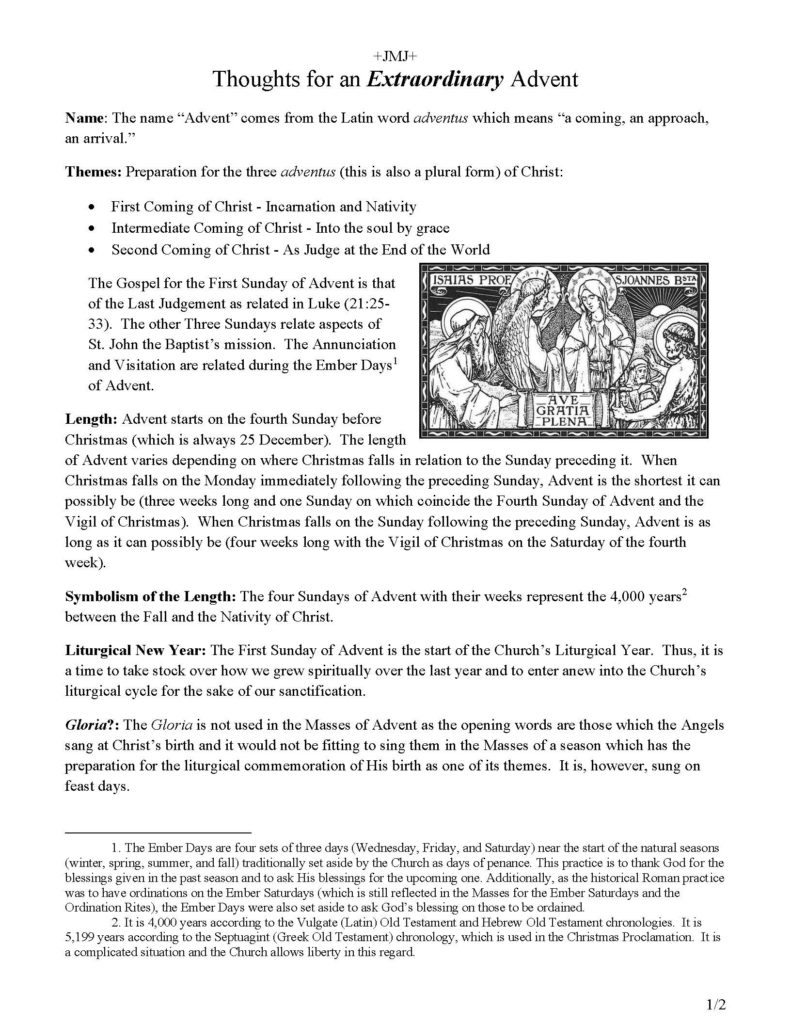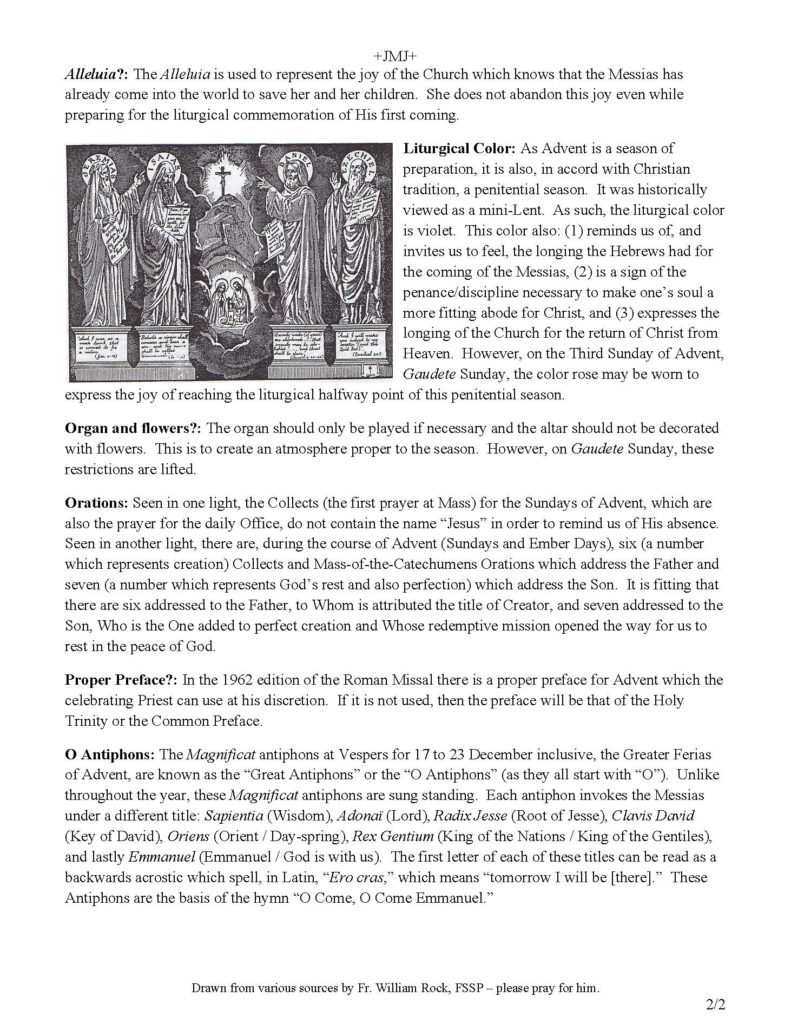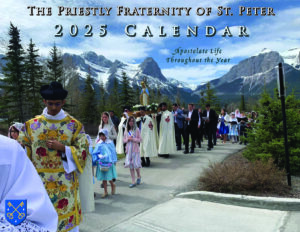Where Hell Begins (Part 1)
The twentieth century has been described as the bloodiest century in human history.
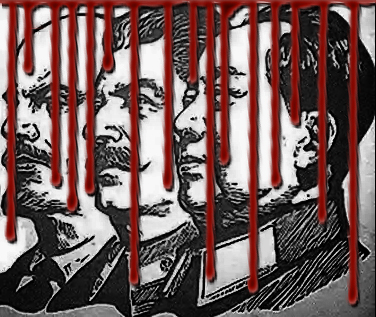 Two world wars, the Russian and Chinese communist revolutions, Vietnam, Cambodia, and Korea (among others), together with the cultural revolution in the 1960’s and the ongoing ones orchestrated through the internet and higher education, along with legalization of abortion and most things foul and debauched provide hard evidence in support of this claim. For those who do not believe hell exists (and that there are souls in it), it would make one wonder what color the sky is in their world.
Two world wars, the Russian and Chinese communist revolutions, Vietnam, Cambodia, and Korea (among others), together with the cultural revolution in the 1960’s and the ongoing ones orchestrated through the internet and higher education, along with legalization of abortion and most things foul and debauched provide hard evidence in support of this claim. For those who do not believe hell exists (and that there are souls in it), it would make one wonder what color the sky is in their world.
Humanity has done a great job at creating its own hell right here on earth; to think that such could not continue in the afterlife requires no small amount of denial. Only the most hardened atheist or evolutionist will fail to admit that there is something fundamentally wrong with man, and its remedy goes beyond our natural capacity. Perhaps the twentieth century (and the trajectory we are currently on in the twenty-first) merely (merely?!) amounts to more and more radical, destructive, and ultimately futile attempts to disprove the reality of our condition.
Critics will accuse us of reducing the complex problems facing humanity down to a simple cause.
But if we understand something of the origin, we have a good chance to understand and accept its remedy. The rebellion we all feel within us is not supposed to be there, nor can it be satiated and disappear by stoking it; a moment of disordered gratification runs the risk of a more vehement comeback, but that runs against conventual wisdom. Humanity is in a state of rebellion with itself.
The book of Genesis describes in poetic language a rebellion that occurred between our first parents and God. Creature rebels against Creator and so the punishment necessarily must fit the crime: the harmony and order God established within us between our reason, will, and passions was turned upside down.
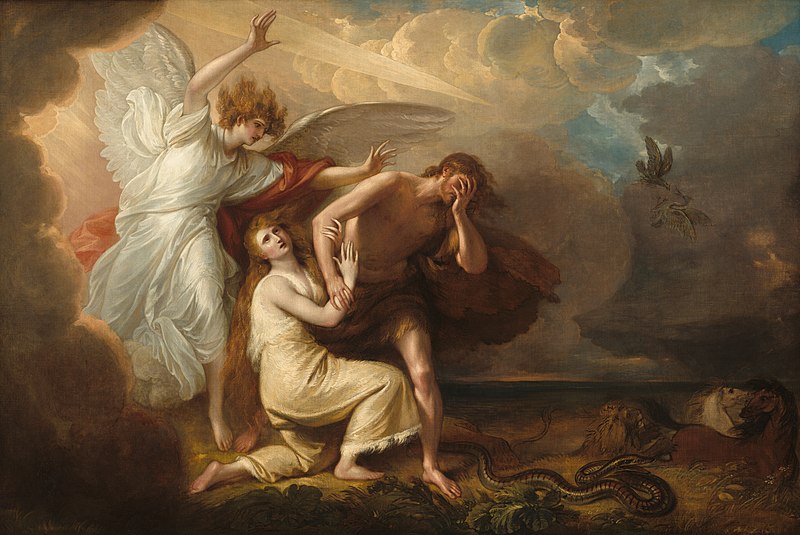
We are prone to selfishness, self-indulgence and to experience in some way a life absent from God, for, left to our own devices, there is no way back to where we were, a veritable hell for ourselves and others. St. Augustine says it well about original sin: Man sold himself into slavery, but could not purchase himself out of it.
It would do well for our modern world (and the Church in some regards) to come to terms with the reality of original sin. Is there really any better explanation for why we are the way we are? It actually does cover all the bases. The challenge for the modern world, of course, would be the need to admit that God exists and actually has expectations for humanity. That is because sin is committed against someone, it is something personal and thus requires admission, humility, honesty, and mercy for its remedy, all things that come at a cost. These require communication, something that requires effort to do effectively.
Interestingly, leaving aside for a moment the irreligious or anti-religious, these realities are often dodged by those who describe themselves as spiritual, a term that is as amorphous and slippery as is the word nice.
At its root, being spiritual does not carry any responsibility and does not involve an encounter with a personal God who makes demands on us, enabling one to be always okay with the way one is. Having no need for formulated dogma or authority outside oneself, one is permitted to make up his own rules, avoiding any moral impetus to really be better and master oneself.
Being spiritual avoids the hell that comes with a broken or damaged relationship with God and that requires genuine partnership and cooperation with Him to repair, something He desires more than we can imagine.
There are lots of spiritual people out there. And they are in danger of trading a hell we are supposed to overcome for the hell that will never end. They avoid the wondrous truth about the God we all need.
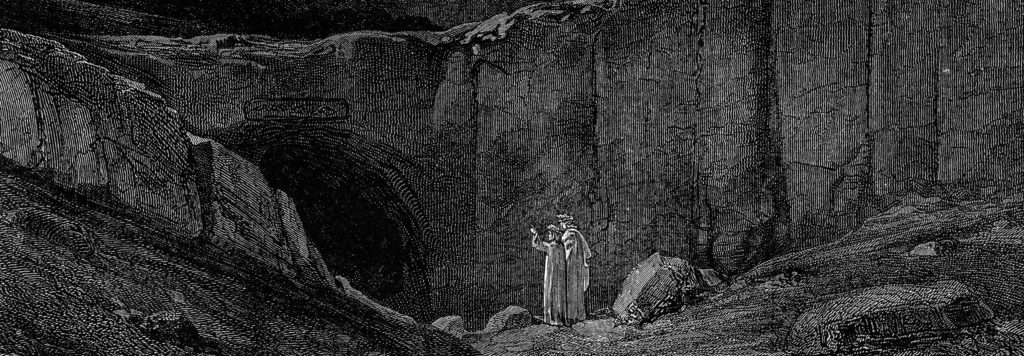
But Catholics can fall into this camp, too, at least practically.
Are we aware of the arrangement God has made for our salvation, and do we let that penetrate deeper than the skin? If not, it is time to call upon the Holy Ghost to stir up some fortitude about this.
To be continued….
December 14, 2020

Advent 2020 video post: Creator Alme Siderum
Wishing all our friends and supporters a holy Advent season. May God richly bless you as we prepare for the coming of Christ.
With special thanks to Corpus Christi Watershed for the music.
December 11, 2020

A Corona Worth Spreading
On May the 17th, in the year of Our Lord 1846, Our Lady of the Immaculate Conception was proclaimed the principal patroness of the United States of America.
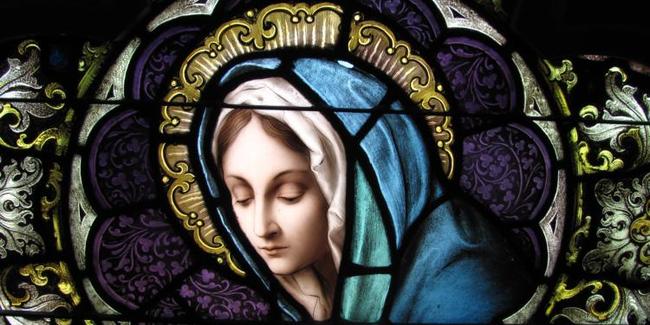
But it is sadly questionable whether contemporary American Catholics have taken that proclamation to heart. To be sure, the feast is duly listed on our liturgical calendars, but how deeply has it entered our folklore and our culture? Does it have the popular presence that La Guadalupana has in Mexico? Or even Lucia in Protestant Sweden? Our non-Catholic countrymen are probably not even aware that we have a patronal feast that day. And that is our shame, not theirs–for we apparently have not shown enough interest in it to attract much notice.
We also find ourselves in Anno Domini 2020 with an extra additional threat to our Patroness’s public honors: an RNA virus of the family Coronaviridae, named for their round, spiky outer appearance, which have reminded taxonomists of the solar corona.
But it would be better to call to our minds a corona of a different sort that can actually help our proper celebration of this feast rather than hinder it.

For that we need one more chronological diversion to the upper Mississippi River in the 1670s, when the French-born Jesuit missionary Jacques Marquette was exploring the region. Readers will likely know Marquette through the buildings, counties, towns, universities, rivers, lakes, parks, railway and boating companies, and a diocese that are named after him.
But there was more to the man than geography. Father Claude Dablon, Marquette’s superior, wrote of him posthumously in 1677:
We might say much of the rare virtues of this noble missionary: of his zeal, which prompted him to carry the faith so far, and proclaim the gospel to so many peoples who were unknown to us; of his gentleness, which rendered him beloved by all, and made him all things to all men — a Frenchman with the French, a Huron with the Hurons, an Algonquin with the Algonquins; of the childlike candor with which he disclosed his heart to his superiors, and even to all kinds of persons, with an ingenuousness which won all hearts; of his angelic chastity; and of his uninterrupted union with God.
But that which apparently predominated was a devotion, altogether rare and singular, to the Blessed Virgin, and particularly toward the mystery of her Immaculate Conception. It was a pleasure to hear him speak or preach on that subject. All his conversations and letters contained something about the Blessed Virgin Immaculate — for so he always called her. From the age of 9 years, he fasted every Saturday; and from his tenderest youth began to say the Little Office of the Conception, inspiring every one with the same devotion.
It is immensely consoling to the modern reader to hear such fervent devotion in a famous name so important to American history, showing that the 1846 proclamation had a taproot anchoring deep in the soil of national history.
Dablon’s letter then follows this description with a treasured bit of information on Pere Marquette’s devotion:
“Some months before his death, he said every day with his two men a little Corona of the Immaculate Conception which he had devised as follows: After the Creed, there is said once the Our Father and Hail Mary, and then 4 times these words: Hail Daughter of God the Father, Hail Mother of God the Son, Hail Spouse of the Holy Ghost, Hail Temple of the entire Trinity. Through thy holy virginity and Immaculate Conception, o Virgin most pure, cleanse my heart and my flesh. In the name of the Father, and of the Son, and of the Holy Ghost — concluding with the Glory Be, the whole repeated three times.”
The Corona of the Immaculate Conception.
This short passage contains a description of a uniquely North American devotion, authored by Pere Marquette and honoring our national Patroness.
 How such an important sacramental has somehow evaded two centuries of American Catholic devotional manuals and prayer books is hard to say. Perhaps it was unthinkingly glanced over, confused with the similarly named, though quite different, Chaplet of the Immaculate Conception by St. John Berchmans.
How such an important sacramental has somehow evaded two centuries of American Catholic devotional manuals and prayer books is hard to say. Perhaps it was unthinkingly glanced over, confused with the similarly named, though quite different, Chaplet of the Immaculate Conception by St. John Berchmans.
In any case, it needn’t languish in obscurity anymore. Now is the time for us to renew our dedication to Our Lady of the Immaculate Conception, to beseech her powerful intercession on behalf of our nation and to make our love for her all the more visible, that the entire world may bear witness to it.
And now is the time, with all the gifts of technology that we have been blessed with, to propagate Our Lady’s Corona, to spread this devotion to every last corner of our country.
Virally, one might even say.
Hail Daughter of God the Father, Hail Mother of God the Son, Hail Spouse of the Holy Ghost, Hail Temple of the entire Trinity!
December 7, 2020

An Ounce of Prevention Worth the Pound of Cure

The Incarnation, Death, and Resurrection of the Son of God are the cause of the redemption of the human race. Our Lady is included in that, for we hear her proclaim in her great Magnificat that her spirit rejoices in God, my Savior.
In God’s plan for Mary to be the Mother of the Word Incarnate, He would embellish her with all the graces necessary for such a call, consequent upon one chief gift.
If a man came upon a large pit with people trapped in it and was able to pull them all out, he would be rightfully credited with saving them. And if the same man prevented a woman from falling into it, he would be equally credited with saving her.
Same pit of original sin, same Redeemer in the Person of Jesus Christ, just a different way of handling the situation.
So goes the privileged grace of the Immaculate Conception of our Lady.
And on account of this, how she finds herself be in a position to assist our Lord in His work, understanding well how she is included in that lot of humanity. O Mary conceived without sin, pray for us who have recourse to thee!
December 4, 2020

Thoughts for an Extraordinary Advent (Printable Guide)
Fr. William Rock, FSSP has put together a series of excellent 2-page guides to the liturgical seasons of the traditional Roman Missal, highlighting their major themes, liturgical peculiarities, and special prayers.
They are in pdf form for easy downloading and double-sided printing on a sheet of paper, and they can be used in the home or as bulletin inserts or fliers in your parish.
Feel free to use and share, and thank you Fr. Rock for compiling these guides and making them available to our readers!
Thoughts for an Extraordinary Advent (PDF)
December 3, 2020

See What Comes Up
by Fr. Gerard Saguto, FSSP
We all have blind spots about ourselves and situations we may be in, and the realization of such things can be quite the exercise in humility.
For those who are fans of the old Far Side comic strip by Gary Larson, part of his brilliance was his ability to capture how humanity is prone to missing the obvious. In one such frame, a building that houses a ladder company is on fire, and as the employees look out from a third story window, the caption has them wishing how they could find a way to climb down. We laughed hard.
One reason for our personal blind spots and missing the obvious can be a lack of courage to face ourselves. Another is the fallen-nature blindness that affects us all and inclines us to take for granted things that we are used to: be it a spouse, family, friends, health, employment, position, or other things.
 As this unfolds, we lose sight of the individual trees that make up the forest. We start to get sloppy; our fallen tendency to search out the path of least resistance becomes more insistent. If left unchecked, we find ourselves in a rut where it seems we are just spinning the wheels; meaning about things that should be important gets confused, or even lost, and a frustration with life begins to set in.
As this unfolds, we lose sight of the individual trees that make up the forest. We start to get sloppy; our fallen tendency to search out the path of least resistance becomes more insistent. If left unchecked, we find ourselves in a rut where it seems we are just spinning the wheels; meaning about things that should be important gets confused, or even lost, and a frustration with life begins to set in.
However, there are a couple of ways to regain perspective and renew vigor.
It can happen from a negative event; that is, when someone or something becomes threatened in such a way that forces us to look at it with the attention it deserves. The illness of a spouse or child, the moving away of a close friend, the loss of a job or health can all be real motivating factors to help us realize the genuine value of something. The heartfelt acknowledgment of potential loss is a sure-fire way of checking contempt and correcting things. The benefit and usefulness of suffering is evident in such instances, at least in hindsight.
Positively, perspective and vigor can also be reclaimed by personal initiative and vigilance to make sure we do not get into ruts with the things that are supposed to be most important, that we are mindful of the obvious in such matters (kind of ironic when you hear it said that way). Hence the old adage that “an ounce of prevention is worth a pound of cure.”
Such initiatives and efforts need not be tiresome, but the sacrifice that goes into being thoughtful and present has a cost, be it in personal time or convenience. Even more so, things that are most important also have an uncanny ability to expose our personal limits and insecurities, which we find threatening as they leave us open to criticism, and so engaging them carries its own risks. But with any worthwhile risk comes the true opportunity for growth: a gaining of self-knowledge, peace, perspective, and competency.
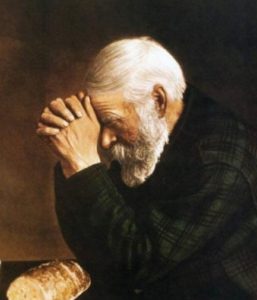 Our Holy Faith often falls victim to being taken for granted. While a routine and discipline are important (assuming these has been achieved in some measure), mindless routine and lack of discipline prey upon the vitality we, deep down, sense the Faith should inspire. Sure, we believe in what the Church proposes for us to believe because it comes from Jesus Christ, but that needs to penetrate more deeply and be pulled in from its ethereal orbit around our souls.
Our Holy Faith often falls victim to being taken for granted. While a routine and discipline are important (assuming these has been achieved in some measure), mindless routine and lack of discipline prey upon the vitality we, deep down, sense the Faith should inspire. Sure, we believe in what the Church proposes for us to believe because it comes from Jesus Christ, but that needs to penetrate more deeply and be pulled in from its ethereal orbit around our souls.
With Advent upon us, the evident threats posed from the secular world compel us all to make concerted efforts to keep “Jesus as the reason for the season.”
The threats certainly have increased in intensity in recent years; even the lukewarm Christian can sense this and perhaps feels the need to join in the resistance and push back. To be a contributing part of this effort requires that our Lord possesses a key place in our hearts. But how to do so when belief seems so uncertain or dark?
This side of eternity, there will always be a certain obscurity to Faith because God wishes that we walk in trust of Him; He wants to lead us because our sanctification is His work with our cooperation. Without Me, you can do nothing (Jn. 15:5).
Adam and Eve tried to steal a glimpse of something they should not have, to put themselves in a position of control they could not have, and that is why faith was so insisted upon by our Lord throughout the Gospel. He is in control, and our fidelity in things both small and large is what obtains for us the supernatural insights into His very life and designs. We wait for the coming of the Son of God-made-Man, the focal point of all history, the only God there is, born to hang on a Cross and redeem us from our sins.
This cannot become ho-hum, but we know there is always a danger of that, or getting stuck in a rut. So does the Church.
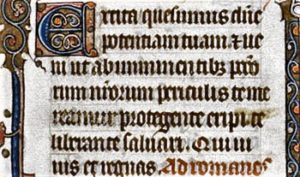 No wonder then, that at the beginning of the liturgical year the Church employs the imperative Excita – Stir up! in the Mass prayers of Advent. We are Baptized and likely Confirmed; that means that graces come with these two sacraments that put us on a path to meet God, throughout this life, at our judgment, and hopefully face-to-face in heaven for eternity. Baptism and Confirmation have left an “indelible mark” on our souls that can never be erased, courtesy of the Holy Ghost, from which Christ identifies us as citizens of His Kingdom and belonging to Him.
No wonder then, that at the beginning of the liturgical year the Church employs the imperative Excita – Stir up! in the Mass prayers of Advent. We are Baptized and likely Confirmed; that means that graces come with these two sacraments that put us on a path to meet God, throughout this life, at our judgment, and hopefully face-to-face in heaven for eternity. Baptism and Confirmation have left an “indelible mark” on our souls that can never be erased, courtesy of the Holy Ghost, from which Christ identifies us as citizens of His Kingdom and belonging to Him.
If the Holy Ghost impressed them, that means He is always ready to “stir up” their consequences – a renewed and invigored faith, courage to tackle the obstacles that challenge its practice, be it in our own soul or in the world, for the love of God and neighbor in the imitation of Christ.
 In our troubled times, make it a personal initiative through Advent (and perhaps beyond) to invoke the Holy Ghost daily, that He indeed “stirs up” this treasure-chest of graces we hold within ourselves and our families. Use those words.
In our troubled times, make it a personal initiative through Advent (and perhaps beyond) to invoke the Holy Ghost daily, that He indeed “stirs up” this treasure-chest of graces we hold within ourselves and our families. Use those words.
Unite such an invocation with our Lord’s true presence in the nearest Tabernacle, a most important and “obvious” belief of the Holy Faith. If we know of loved ones who have wandered, ask the same for them, that they begin to sense the “obvious” need for the Church and the Sacraments, particularly Holy Communion and confession. And for conversions we pray for, remember that among the Christian “denominations” there is only one Baptism – it belongs to the Catholic Church – so ask the Holy Ghost to “stir up” in them the courage to see where the blind spots are in their profession of faith.
The glad tidings of Christmas should be obvious to anyone who believes. This is the will of God, your sanctification (1 Thess 4:3).
Light and life to all He brings, throwing light on our blind spots, provided of course that we give the Infant in the Manger the attention He rightfully deserves.
December 2, 2020

Interview with Fr. Thomas Sofatzis, FSSP
Readers of the Missive may be interested in this recent interview with Fr. Thomas Sofatzis on Sacred Music, Beauty, and the Priesthood.
In this special episode of the Parousia Podcast, Phillip Brooks is joined by Fr Thomas Sofatzis FSSP to discuss the sacred Priesthood of Jesus Christ, ordinations in the midst of Covid, the importance of beauty in the liturgy, Church architecture and sacred music.
Fr Sofatzis grew up in Sydney attending his home parish of St Bernadette’s in Clemton Park before discovering the Traditional Latin Mass at the Church of the Maternal Heart of Mary in Lewisham and subsequently joining the Priestly Fraternity of St Peter. He was ordained on the 8th of August 2020, and had only been ordained a month at the time of this recording.
December 1, 2020

The Altar is the Crib
We are now in Advent — a time of watching and waiting.
A weary, exhausted world awaits its redemption. The Magi await a King of Kings. John the Baptist awaits the Messiah. And Our Lady awaits a Child who will be the fulfillment of all of these.
We might be tempted in this time of medical and political uncertainty to place our hopes and expectations in other solutions to the world’s problems.
But as Catholics our hearts’ joy rests instead, as we will soon sing in the carol In Dulci Jubilo, in the presepio. And as St. Alphonsus Liguori has taught us, Christ “is born every day in the Sacrament by means of the priests and the words of consecration; the altar is the crib.”
 It was in the quiet stillness of Bethlehem, in a manger, away from the halls of power, that the world was redeemed. And that Incarnation continues to be made present in thousands of whispered consecrations over the altars of the world.
It was in the quiet stillness of Bethlehem, in a manger, away from the halls of power, that the world was redeemed. And that Incarnation continues to be made present in thousands of whispered consecrations over the altars of the world.
As we enter this penitential and hopeful season, let us remember that it is the Masses of our priests that truly and really bring our Savior into the world.
With humble thanksgiving and recourse to God, we ask the faithful for their spiritual and financial support this Advent as we strive to increase our Mass times and make Christ’s birth present to all the devout faithful no matter what obstacles may be placed in our way.
Please keep us in your prayers and, if you are able, join us tomorrow, December 1st for our Giving Tuesday campaign to help us meet the sacramental challenges that we face: https://fssp.com/giving-tuesday/
And may the Christ child, who continues to feed us from the crib, continue to draw us all closer to the life of the Holy Trinity in heaven.
November 30, 2020

Home Base
by Fr. Gerard Saguto, FSSP.
With Thanksgiving Day, many are (or were, depending on where you live) looking forward to getting together at home and spending time with family and friends.
The thought of home is something that is written into the heart of every human being; while often times it brings to mind a physical house or location, it goes deeper.
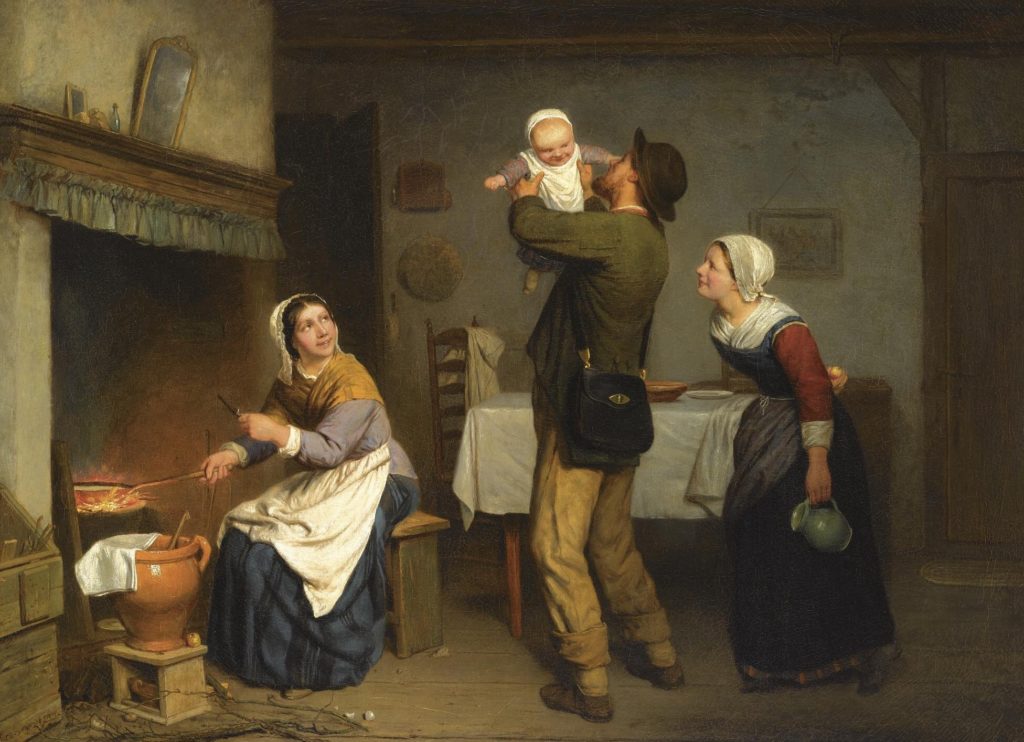 In fact, there seems to be an unspoken standard for comparison about what constitutes a home: home is supposed to be a place of security, stability, and safety, a place where one found love and learned about life, was educated and allowed to mature, so as to engage and contribute well to the larger world outside it, and remained always a place one can return to for a needed respite. While every home has its own mix of dysfunction, the anger and frustration displayed by those raised in more dysfunctional ones reveals this innate sense of what was to be expected.
In fact, there seems to be an unspoken standard for comparison about what constitutes a home: home is supposed to be a place of security, stability, and safety, a place where one found love and learned about life, was educated and allowed to mature, so as to engage and contribute well to the larger world outside it, and remained always a place one can return to for a needed respite. While every home has its own mix of dysfunction, the anger and frustration displayed by those raised in more dysfunctional ones reveals this innate sense of what was to be expected.
A home then is not a sum of commands or rules given by a father or mother. Rather, a home is ultimately an interaction between personalities that are supposed to be loving each other – spouses, parents, children, siblings, grandparents. Rules or commands should be in play, and they need to be, but these are not what are supposed to define the home. The rules and commands originated with a person.
A few years ago, there was a large national media initiative to reach out to lapsed Catholics called Catholics Come Home. While it had varied levels of success, it was an interesting approach, because this reality of the Catholic Church as a home often escapes Catholics when they consider what the Church actually is.
With only a vague sense of her origins and history, and an anemic experience with the institutional aspect of the Church, many Catholics indeed tend to view the Church as a sum of commands and rules, imposing a morality that they find outdated or even impossible. Finding little support, the faith infused at Baptism is stifled and choked by the thorns of the world, and it becomes easy to drift away. What they ultimately have lacked, though, is a real sense of contact, intrigue, and love with a Person. Where to begin?
But we preach Christ and Him crucified. (1 Cor:23)
Is the Man on the Cross just a man?

The Church is a home, and that is because it begins with a Person, Jesus Christ, true God and true Man. Faith must begin in Him, for faith is a meeting of two personalities – Christ and me.
Who do you say that I am? Christ asks His Apostles. (Mt 16:15) There is only one correct answer to this question, upon which is built the entire deposit of Faith.
As our Lord taught, governed, and sanctified by His physical Body that He took of our Lady overshadowed by the Holy Ghost, so He continues to do now with His Mystical Body, the Church, overshadowed by the Holy Ghost on Pentecost. There is no doctrine, no moral apart from Him who declares Himself to the be the Truth.
Nothing is credible in the Church apart from Christ who lives in it with us; if we do not believe Christ is God, then we never believe in the truths that flow from that and have had tremendous impact on us – the Holy Trinity, the Holy Eucharist, the Resurrection, the forgiveness of sins.
Therefore, the Church cannot be considered as something that stands between me and Christ, as so often is alleged.
 The Church is Christ, in her visible human element and invisible divine element, living through the ages in such a way as to be a place of dogmatic and moral security as a house built on rock, and where one understands how to love and live from the Person who is Life itself.
The Church is Christ, in her visible human element and invisible divine element, living through the ages in such a way as to be a place of dogmatic and moral security as a house built on rock, and where one understands how to love and live from the Person who is Life itself.
This means that love is the basis of being a member of the Church, as it is supposed to be the basis of being a member of a home.
We have been baptized into Christ’s death, the greatest act of love ever displayed and graciously made available to all. As dysfunctional as the Church can be in her human element – and she is – it is perfect love of Christ Crucified, our “Eternal Contemporary” as Ven. Fulton Sheen coins Him, living in the Church that seeks to unite her members and remain the constant inspiration for our holiness and mutual forgiveness.
Falling away from the Church is falling away from love of a Person, a veritable running away from the home Christ built. A Person stands behind the doctrine and morals.
Be convinced that He always leaves His runaways with a key to get back into the house. And a real hand with a hole in it stands ready to open the door.
That is something to be most thankful for.
November 25, 2020

Signs and Churches
by Fr. William Rock, FSSP
It would be difficult to overstate the important role which signs hold in Catholicism.
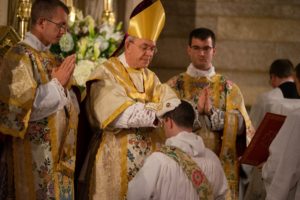 They are, in fact, everywhere and are foundational to the Catholic system. The Sacraments are sacred signs instituted by Christ which confer grace. The Sacraments and Sacramentals are signs which declare the Church’s faith (see S.T. III, q. 61, a. 4, c). The words of Scripture and the words and gestures of the Liturgical rites are all signs. St. Thomas teaches that the Sacramental Characters of Baptism and Orders empower their possessors to receive and confer sacred signs respectively (see S.T. III, q. 63, especially, a. 2, c and a. 4, ad. 3).
They are, in fact, everywhere and are foundational to the Catholic system. The Sacraments are sacred signs instituted by Christ which confer grace. The Sacraments and Sacramentals are signs which declare the Church’s faith (see S.T. III, q. 61, a. 4, c). The words of Scripture and the words and gestures of the Liturgical rites are all signs. St. Thomas teaches that the Sacramental Characters of Baptism and Orders empower their possessors to receive and confer sacred signs respectively (see S.T. III, q. 63, especially, a. 2, c and a. 4, ad. 3).
But the question may be rightly asked: what exactly is a sign?
According to Words of Wisdom – A Philosophical Dictionary for the Perennial Tradition, a sign is “a linguistic or other type of thing used to represent something else” (s.v. “Sign”). To put it more simply, a sign points to something beyond itself.
Some signs are natural. For example, smoke is a sign: it points to fire. Other signs are produced by intelligences, and these are called conventional signs. A traffic light is such a sign: a man-made sign, with the different colored lights pointing to, indicating, what actions the drivers should take.
Words are signs, as they point to ideas and realities beyond just an arrangement of shapes or sounds. The word “dog,” whether written or spoken, expresses, or points to, the idea one has of dog in the intellect and/or the dog which exists in reality.
God Himself also makes use of signs.
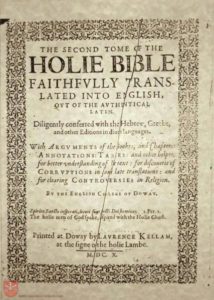 Christ instituted the Sacraments. Sacred Scripture, written under the inspiration of God, is a collection of signs. By way of example, the word “ark” written on the page points to the ark which really existed and was built by Noah. But the use of signs in Sacred Scripture goes deeper than this. As St. Thomas wrote, “the author of Holy Writ is God, in whose power it is to signify His meaning, not by words only (as man also can do), but also by things themselves” (S.T. I, q. 1, a. 10).
Christ instituted the Sacraments. Sacred Scripture, written under the inspiration of God, is a collection of signs. By way of example, the word “ark” written on the page points to the ark which really existed and was built by Noah. But the use of signs in Sacred Scripture goes deeper than this. As St. Thomas wrote, “the author of Holy Writ is God, in whose power it is to signify His meaning, not by words only (as man also can do), but also by things themselves” (S.T. I, q. 1, a. 10).
God, as He is the Author of reality, can have the realities expressed by the words of Sacred Scripture be themselves signs of other realities. So, while the word “ark” is a sign for the ark which really existed and was built by Noah, the ark which really existed was itself a sign of – it pointed to and expressed characteristics of – the Church.
As the dedications of several churches has been celebrated liturgically this month (the Dedication of the Archbasilica of Our Holy Savior [Archbasilica of Saint John Lateran] on November 9th and the Dedication of the Basilicas of Sts. Peter and Paul on November 18th), it is worth noting that the Church views these buildings, and all church buildings, as signs.
What do church buildings symbolize? To what are they supposed to point? What do they represent? The Neo-Gallican Preface for the Dedication of a Church expresses the following:
You Who being the giver of all good things, dwellest in this house of prayer which we have built, and sanctifiest the Church, which Thou didst found Thyself, with unceasing work. For this is truly the house of prayer, represented by visible buildings, the temple wherein dwelleth Thy glory, the seat of unchanging truth, the sanctuary of eternal charity.
According to the text, the “visible buildings,” the physical church buildings, represent, point to, are signs of, the Church, the Mystical Body of Christ, the truest “house of prayer…the temple wherein dwelleth Thy glory, the seat of unchanging truth, the sanctuary of eternal charity.” This expresses the mind of the Church, that church buildings – temples as the Liturgy calls them – are signs of the Church herself: Militant, Suffering, and Triumphant.
The same sentiment is expressed in the Postcommunion (In anniversario Dedicationis) from the Mass of a Dedication of a Church. In this prayer, the Church prays:
O God, Who from living and chosen stones dost prepare an eternal dwelling-place for Thy majesty; assist Thy suppliant people, that Thy Church, whilst benefitting by material enlargement, may also expand by spiritual increase.
From the text of prayer, it is clear that what is being prayed for is not the material building, but the Church herself, being built up by “living and chosen stones,” the Christian faithful.
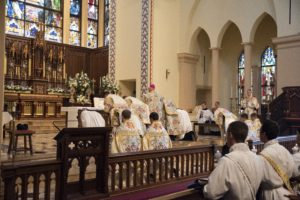 It seems safe to hold, then, that this implies that the stones and other material used to build a church building are signs of these “living and chosen stones” which build up the Church, thus again indicating that the church building is a sign of the Church. The ending of the prayer also indicates that the Church, as expressed by her Liturgy, recognizes a relationship of sign and signified between the church building and the Church herself, for the prayer asks that just as there is a “material enlargement,” an increase in the sign, may the reality to which the sign points, the Church herself, “also expand by spiritual increase.”
It seems safe to hold, then, that this implies that the stones and other material used to build a church building are signs of these “living and chosen stones” which build up the Church, thus again indicating that the church building is a sign of the Church. The ending of the prayer also indicates that the Church, as expressed by her Liturgy, recognizes a relationship of sign and signified between the church building and the Church herself, for the prayer asks that just as there is a “material enlargement,” an increase in the sign, may the reality to which the sign points, the Church herself, “also expand by spiritual increase.”
As it is the Mind of the Church, expressed in the above Preface and Postcommunion, that church buildings are signs of the Church herself, they should be so designed and decorated so as to express this symbolism.
The style of the architecture, even in a simple church, should lift the mind from the day-to-day to things which are spiritual, supernatural, and eternal. Images of the Angels and Saints in the church building are signs of members of the Church Triumphant inhabiting it. It is unfortunate then, when church buildings are built or re-designed in such a way that minimizes this expression.
Reducing the church building to a utilitarian minimum, with an exaggerated focus on the church building being a worship space for the gathered community, serves to obscure the pointing of the church building to the Church herself.
The same is true when the signs used in the Sacraments and Sacramentals are reduced to a bare minimum. Continual exposure to such minimalism can only serve to numb the faithful’s receptively to the signs traditionally use in the Church’s liturgies. Such a numbness not only hinders believers from fully entering into the Church’s practices, but also alienates them from the mindset of their Catholic forbearers.
While it might be true that learning the meanings behind some of the signs used by the Church may take some effort, various resources are available to aid the faithful. Let us then, dear readers, commit ourselves to being immersed in the Church’s language of signs and to having a truly Catholic understanding of Scripture, the Sacraments, Sacramentals, and, indeed, even church buildings themselves.
Fr. William Rock, FSSP was ordained in the fall of 2019 and is currently Assistant Pastor at Mater Misericordiae parish in Phoenix, AZ.
November 23, 2020


